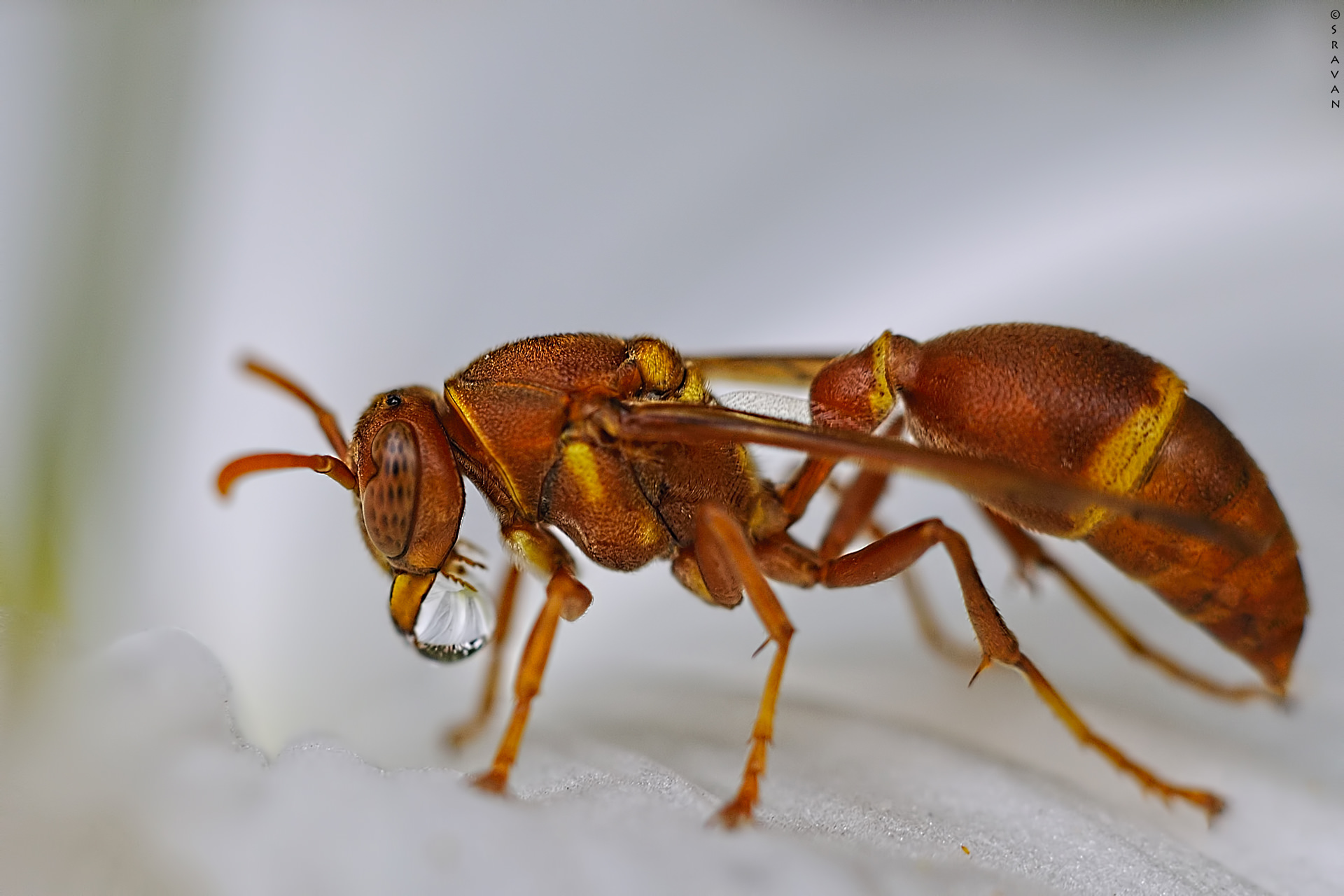Tip: Using Extension Tubes
The above image was taken using Extension Tubes.
Saturday, without any prior planning purchased Kenko Extension Tubes (ET) for Nikon F-Mount AF lenses, first time without doing R&D on internet. Tested them for an hour on the night on my AFS 50mm f/1.8G and AFS 70-300mm VR.
Want to share “my thoughts” on them, may be useful for others.
WHY Extension Tubes?
1. To get macro shooting capabilities on non macro lenses.
2. Or to get more magnification than 1:1 on macro lenses
Focus
1. Auto focus works on individual ET, not recommended to rely on stacked, and little slow but sufficient for any work.
2. Have to sacrifice shooting at INFINITY, this never worked on any of my lenses tested, so, no birds in flight and no focus on any subject farther than the lens specified maximum focus distance.
3. Should be very careful on focus and DOF. Slight shake of camera will spoil the image.
4. Best results with tripod, where you can use tripod, otherwise shoot as many as you can to make sure you will get enough keepers.
Results on AFS 50mm f/1.8G
1. For medium sized flowers, 12mm ET is a best fit, please check the result posted in the link.
http://www.indianaturewatch.
2. For small flowers, 20mm ET will be good.
3. For smallest objects, like 1cm flowers/jewelry like ear rings, 36mm will be the best.
I found the closest focus distance is around 2 inches with this and very much suitable for the above.
Please check this image http://www.indianaturewatch.
Stacking of External Tubes, found not much required as the above are sufficient.
Results on AFS 70-300mm VR
As the zoom lenses are known for their versatility, ETs on this zoom are really versatile and absolute fun using this combination.
1. 12mm ET is not much useful as we will not gain much magnification, but AF is good, can shoot Birds with AF!
Please check the following link.
http://www.indianaturewatch.
2. 20mm ET, here the fun starts. When there is no subject in the view finder and you are at 70mm, then start zooming in… Suddenly you will find the subject which means, you lens has acquired focus at that zoom, suppose 200mm, then lock the focus there. Your auto focus works and you can recompose you subject in the same way what normally we do. Manual focus is still not required.
A Butterfly http://www.indianaturewatch.
Another one http://www.indianaturewatch.
And again, you lens is also ready for Bird photography at the same time, check the link below, the subject I was waiting to get a clean shot from last 1.5 years!
http://www.indianaturewatch.
This one again with Camera AF, able to shoot around 10 shots without even a single AF failure in absolute low light!!!
3. 36mm ET is good with good AF speed.
Please check this: http://www.indianaturewatch.
Where best suits?
1. Places like parks/gardens for shooting different types of subjects like flowers/butterflies/insects/
2. Other places where you may come across such occasions where you may need a macro suddenly like you may go for dedicated bird photography but may find interesting macro subjects.
Disadvantages
1. One has to decide in advance what he/she will be shooting, otherwise one has to change the corresponding ETs always.
2. No focus at infinity in my test scenarios
3. Focus must be very accurate and should counter check after the shot
4. Extra added weight
5. Extra investment too!
Definitely one can try ET.
Have a great time and have loads of fun!
Thanks,
Sravan

